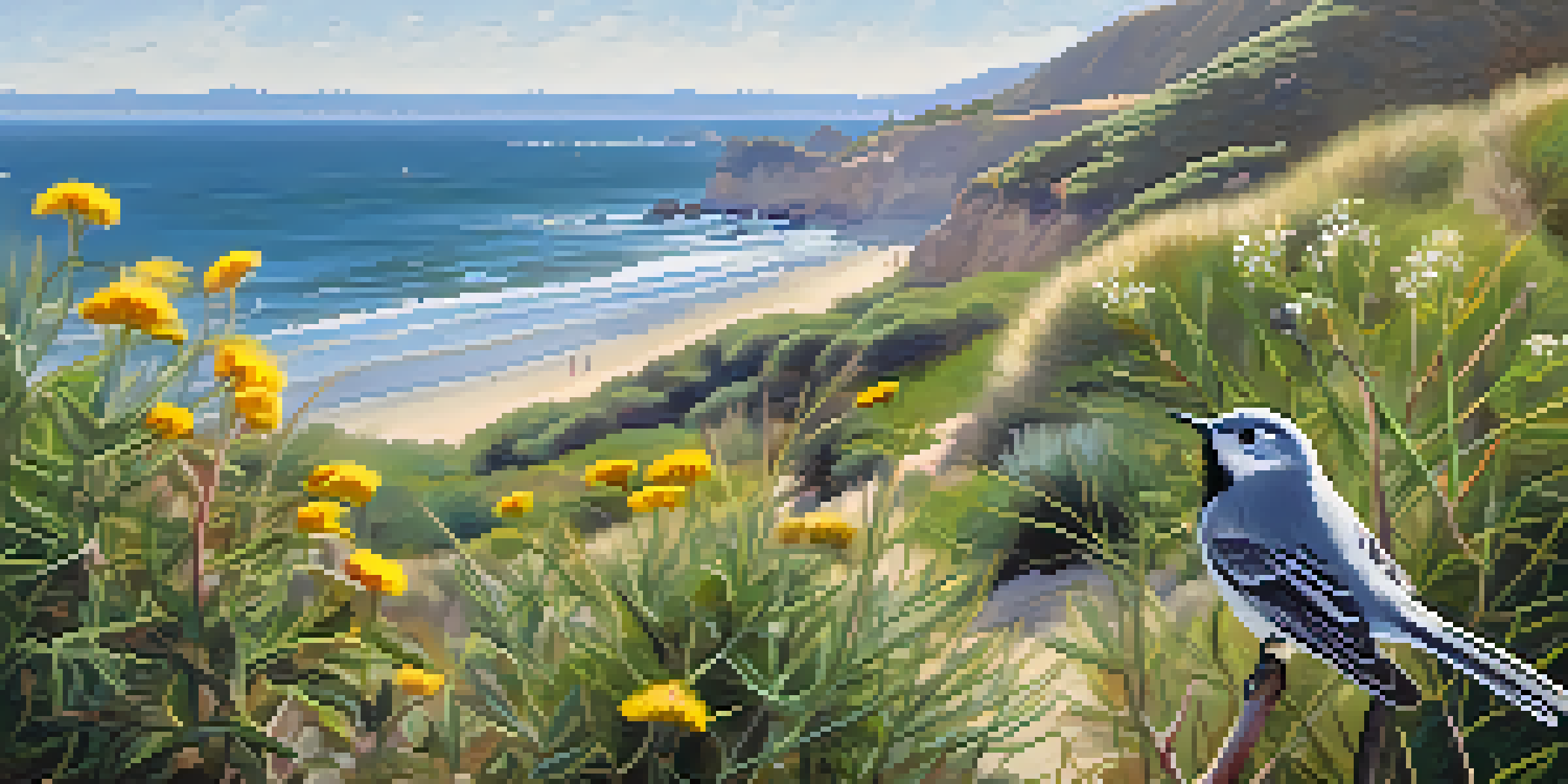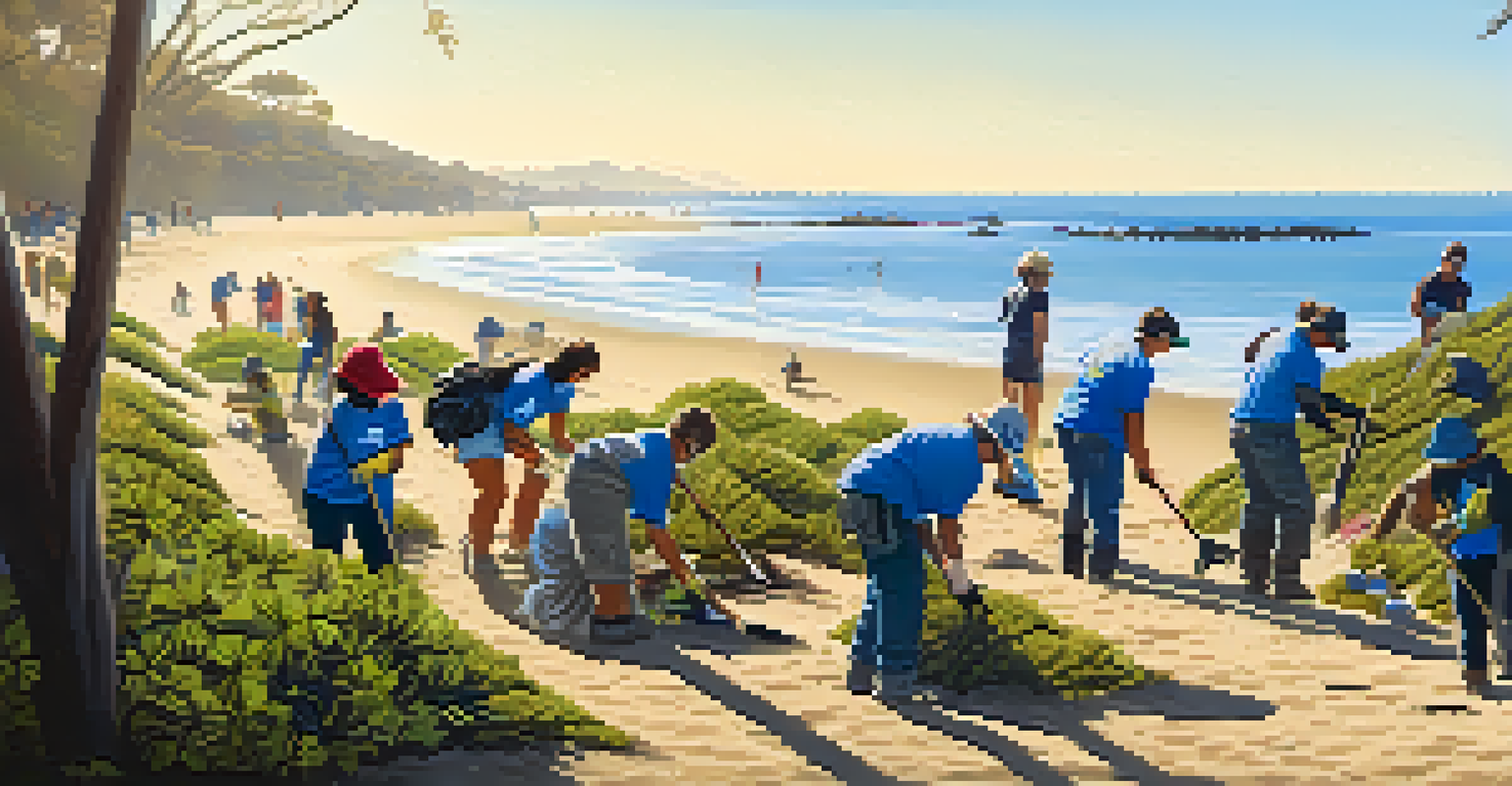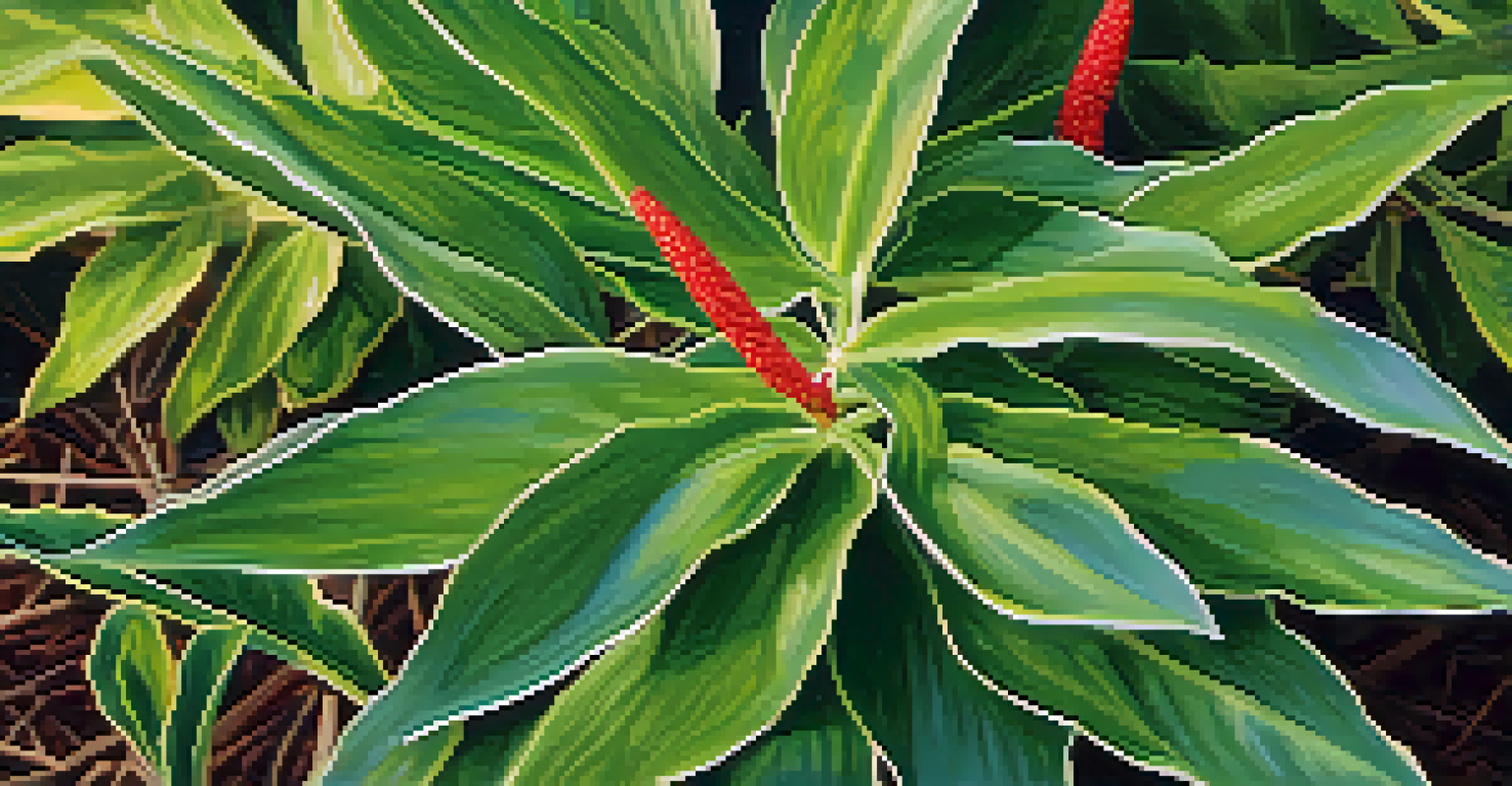The Threat of Invasive Species to Santa Barbara Wildlife

What Are Invasive Species and Why Are They a Concern?
Invasive species are non-native organisms that disrupt local ecosystems. They can be plants, animals, or even microbes that, when introduced to a new environment, thrive at the expense of native species. This can lead to significant ecological, economic, and social repercussions, making them a major concern for conservationists and wildlife enthusiasts alike.
Invasive species are not just a problem for conservationists; they are an economic threat and a challenge to the resilience of our ecosystems.
For example, when invasive plants take root in Santa Barbara's coastal habitats, they can outcompete native flora, reducing biodiversity. This loss of native plants can further affect local wildlife that relies on them for food and shelter. As these invasive species spread, they alter habitats in ways that can be detrimental to the local ecosystem.
Understanding the threat posed by invasive species is crucial for protecting Santa Barbara's unique wildlife. It’s not just about saving individual species; it’s about maintaining the health and balance of the entire ecosystem. This balance is essential for the survival of countless creatures that call Santa Barbara home.
How Do Invasive Species Enter Santa Barbara?
Invasive species often arrive in new regions through human activities, whether intentional or accidental. For instance, some invasive plants are introduced as ornamental landscaping, while others hitch a ride on boats and vehicles. This unintentional spread highlights the interconnectedness of our actions and the environment.

Another common pathway is through global trade. As goods are transported across borders, some non-native organisms can be unknowingly included. This practice is particularly problematic in coastal areas like Santa Barbara, where shipping activities are frequent and diverse.
Invasive Species Disrupt Ecosystems
Invasive species threaten native biodiversity by outcompeting local organisms and altering habitats.
Once these species establish themselves, they can spread quickly, making eradication efforts challenging. It’s a reminder of our responsibility to be aware of the potential impacts of our choices, especially when it comes to travel and trade. Being informed is a vital step toward protecting local ecosystems.
Impact on Native Species and Ecosystems
The introduction of invasive species can lead to the decline of native populations, sometimes even driving them to extinction. In Santa Barbara, species such as the California native bird, the California Gnatcatcher, face threats from invasive plants that change their habitat. These changes can disrupt breeding, feeding, and nesting behaviors.
We won't have a society if we destroy the environment.
Moreover, invasive species often lack natural predators in their new environment, allowing them to multiply unchecked. This unchecked growth can result in resource competition that puts additional stress on native species. The ripple effect can be extensive, impacting everything from food chains to habitat structures.
Consequently, the loss of native species can compromise ecosystem resilience, making it harder for habitats to recover from disturbances. Protecting native wildlife is not just about saving individual species; it’s about maintaining the entire ecological community that supports life in Santa Barbara.
Economic Costs of Invasive Species
Invasive species can also have significant economic implications for local communities. In Santa Barbara, the cost of managing invasive species can strain public resources, diverting funds from other critical conservation efforts. Managing these species requires ongoing monitoring, control efforts, and public education, all of which can add up.
For businesses that rely on tourism and outdoor recreation, the presence of invasive species can deter visitors. Imagine a beautiful hiking trail overwhelmed by invasive plants – it’s not just unappealing; it can also pose risks to hikers and wildlife alike. This shift can lead to decreased revenue for local businesses and a loss of community pride.
Economic Impact of Invasive Species
The presence of invasive species can strain local economies by diverting resources and deterring tourism.
Ultimately, the economic impact of invasive species extends to everyone. By recognizing the far-reaching consequences of these organisms, communities can rally together to create solutions that benefit both the environment and the economy. Encouraging responsible practices can help mitigate these costs.
Community Involvement in Combatting Invasive Species
One of the most effective ways to combat invasive species is through community involvement. Local organizations often host events to educate residents about identifying and removing invasive plants and animals. Engaging the community fosters a sense of responsibility and stewardship toward the environment.
Volunteering for local clean-up events not only helps remove invasive species but also raises awareness about the issue. For example, beach clean-ups can prevent the spread of invasive aquatic organisms that could hitch a ride on boats or fishing gear. Such hands-on experiences cultivate a deeper connection to the local ecosystem.
By empowering community members to take action, Santa Barbara can become a model for successful invasive species management. Everyone has a role to play, from educators to local business owners. Together, we can work towards preserving the unique wildlife that makes Santa Barbara so special.
Strategies for Prevention and Management
Preventing the introduction of invasive species starts with education and awareness. Informing the public about the risks associated with planting non-native species in gardens or bringing outdoor gear from other regions can make a significant difference. Simple guidelines can help individuals make informed choices that protect local habitats.
Management strategies can include physical removal, chemical treatments, and habitat restoration. For instance, regularly scheduled removal events can help control established invasive populations, while restoration efforts can reintroduce native species. Collaboration with local experts can ensure these methods are effective and environmentally friendly.
Community Action is Crucial
Engaging the community in awareness and removal efforts is essential for effective management of invasive species.
Ultimately, a proactive approach is key. By combining community efforts with expert knowledge, Santa Barbara can lead the way in preventing and managing invasive species. Together, we can safeguard the region's rich biodiversity for future generations.
The Role of Research in Understanding Invasive Species
Research plays a vital role in understanding the dynamics of invasive species and their impacts on local ecosystems. Scientists study the behavior, reproduction, and spread of these species to develop effective management strategies. By gathering data, researchers can identify which invasive species pose the greatest threats and how best to address them.
In Santa Barbara, local universities and research institutions often collaborate with conservation organizations to monitor invasive populations. This partnership leads to a greater understanding of the challenges posed by these species and the development of innovative solutions. Research not only informs management practices but also educates the public about the importance of biodiversity.

As we continue to learn more about invasive species and their effects, it becomes clear that ongoing research is essential. Informed decisions and strategies can only arise from a solid foundation of scientific knowledge. Investing in research today will pay dividends in preserving the unique wildlife of Santa Barbara for years to come.